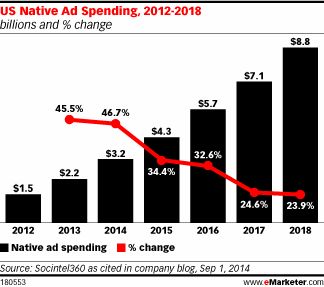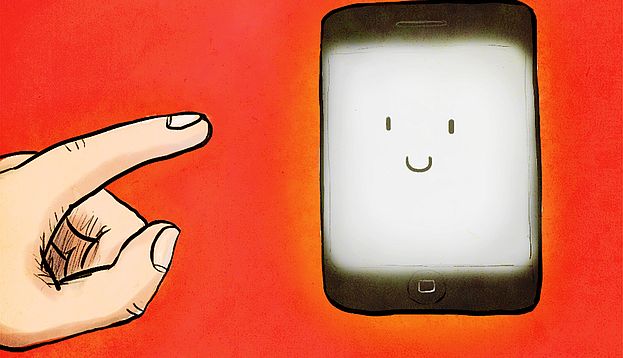Native advertising has certainly been on the rise as of late, but some may be questioning whether it can continue to do so. However, according to a new report from eMarketer, titled “Native Advertising Update: Marketers See Healthy Spending Growth In 2015,” it’s pretty clear — it’s here to stay.
Marketers believe that native ads serve a number of long-term benefits, such as the ability to reach viewers via owned media and increase their numbers, as well as allowing others to get through ads that would otherwise clutter the screen. And others feel that the value of native with an increasing mobile audience would definitely pick up, no matter what size the screen may be.

However, the big draw, according to the report, is clearly engagement. Consumers can be won over easily with the right ad campaign. “Traditional digital advertising has become wallpaper. It doesn’t improve anyone’s experience on a site and readers, myself included, pretty much look past it. … Brands that have a strong point of view and great partners to help them express it can enjoy massive engagement [with native],” said GE’s global head, media strategy, Jason Hill.
While some may find native difficult to pull off compared to general advertising methods, many marketers believe that it will really go places over the next year and a half. “We’ve taken most of the dollars that we put behind digital display into native types of programs and media partnerships,” said Hill. “We expect to continue the approach, but to evolve and innovate so these programs feel fresh and compelling. However, there are still markets where we do digital display.”
As you can see in the graph, dollars for native ad spending will certainly be on the rise, while the percentage of change is likely to drop with each increase. By 2018, it’s expected that $8.8 billion will be spent on native ad budgets, compared to the $1.5 billion that was spent in 2012, or the $3.2 billion for this year. Indeed, it’s not going away.

